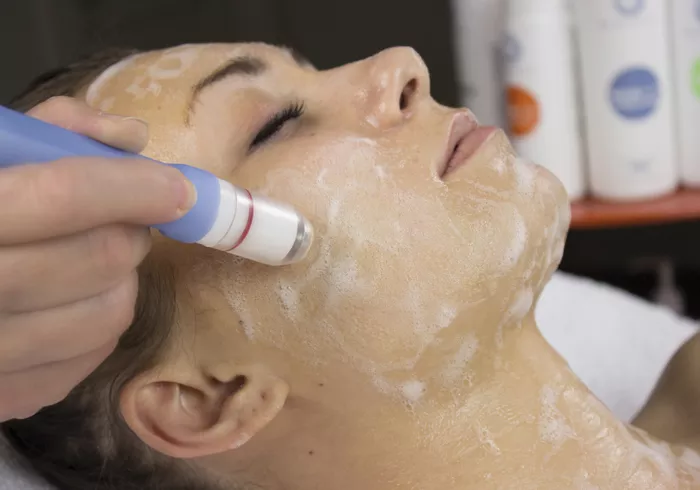A SMAS facelift is a popular surgical procedure that can improve the appearance of the face by lifting and tightening the underlying facial muscles and tissues. The procedure involves repositioning the superficial musculoaponeurotic system (SMAS), which is a layer of tissue that covers the facial muscles, to create a more youthful and refreshed appearance. In this article, we will review the current literature on the longevity of a SMAS facelift.
What is a SMAS Facelift?
A SMAS facelift is a surgical procedure that involves lifting and tightening the underlying facial muscles and tissues to create a more youthful and refreshed appearance. The procedure is typically performed under general anesthesia or local anesthesia with sedation and involves making incisions in the hairline and around the ears.
During the procedure, the surgeon will lift and reposition the SMAS layer of tissue, which covers the facial muscles, to create a more youthful and natural-looking contour. The surgeon may also remove excess skin and fat and tighten the skin to further enhance the results.
How Long Does a SMAS Facelift Last?
The longevity of a SMAS facelift can vary depending on several factors, including the patient’s age, skin quality, and lifestyle habits. However, several studies have attempted to estimate the average duration of a SMAS facelift.
A study published in the journal Plastic and Reconstructive Surgery in 2011 followed 100 patients who underwent a SMAS facelift and found that 85% of patients were satisfied with their results at an average follow-up of 5.5 years. The study also found that the average duration of the facelift was 8.5 years.
Another study published in the journal Aesthetic Plastic Surgery in 2014 followed 50 patients who underwent a SMAS facelift and found that the average duration of the facelift was 6.5 years. The study also found that the patients who maintained a healthy lifestyle, including avoiding smoking and excessive sun exposure, had longer-lasting results.
Factors That Affect the Longevity of a SMAS Facelift
Several factors can affect the longevity of a SMAS facelift, including:
Age: Younger patients may have longer-lasting results than older patients, as their skin may have better elasticity and be more responsive to the procedure.
Skin quality: Patients with good skin quality, including good tone and texture, may have longer-lasting results than patients with poor skin quality.
Lifestyle habits: Patients who maintain a healthy lifestyle, including avoiding smoking and excessive sun exposure, may have longer-lasting results than patients who do not.
Weight fluctuations: Patients who experience significant weight fluctuations after the procedure may have shorter-lasting results, as weight gain or loss can affect the shape and contour of the face.
Surgical technique: The surgical technique used during the procedure can also affect the longevity of the facelift. Surgeons who use conservative techniques and avoid over-tightening the skin may achieve longer-lasting results.
Maintenance and Touch-Up Procedures
While a SMAS facelift can provide long-lasting results, it is important to maintain the results through a healthy lifestyle and appropriate skin care. Patients should avoid smoking and excessive sun exposure, as these can accelerate the aging process and affect the longevity of the facelift.
In some cases, touch-up procedures may be necessary to maintain the results of a SMAS facelift. These procedures may include non-surgical treatments, such as injectable fillers or Botox, or surgical procedures, such as a revision facelift.
Non-Surgical Maintenance Procedures
Injectable fillers and Botox are non-surgical options for maintaining the results of a SMAS facelift. Injectable fillers, such as hyaluronic acid or collagen, can be used to restore volume to the face and enhance the results of a SMAS facelift. Botox can be used to relax the muscles that cause wrinkles and fine lines, further enhancing the results of a SMAS facelift.
Non-surgical maintenance procedures are typically less invasive than surgical procedures and can be performed in a shorter amount of time. However, the results of non-surgical procedures are typically temporary and may require repeat treatments to maintain the results.
Revision Facelift
In some cases, a revision facelift may be necessary to maintain the results of a SMAS facelift. A revision facelift is a surgical procedure that is performed to correct any issues or complications that may have occurred after the initial facelift.
Some patients may experience sagging or drooping of the facial tissues after a SMAS facelift, which can be corrected with a revision facelift. A revision facelift may also be necessary if the patient experiences significant weight fluctuations or if the initial facelift was not performed correctly.
The recovery time for a revision facelift is typically longer than the recovery time for a SMAS facelift, as the procedure is more invasive. However, a revision facelift can provide long-lasting results and may be necessary to maintain the results of a SMAS facelift over time.
Conclusion
In conclusion, a SMAS facelift is a surgical procedure that can improve the appearance of the face by lifting and tightening the underlying facial muscles and tissues. The longevity of a SMAS facelift can vary depending on several factors, including the patient’s age, skin quality, and lifestyle habits. However, several studies have estimated the average duration of a SMAS facelift to be between 6.5 and 8.5 years. Patients can maintain the results of a SMAS facelift through a healthy lifestyle and appropriate skin care, and touch-up procedures may be necessary to maintain the results over time. Non-surgical maintenance procedures, such as injectable fillers and Botox, can also be used to enhance the results of a SMAS facelift. In some cases, a revision facelift may be necessary to correct any issues or complications that may have occurred after the initial facelift.


